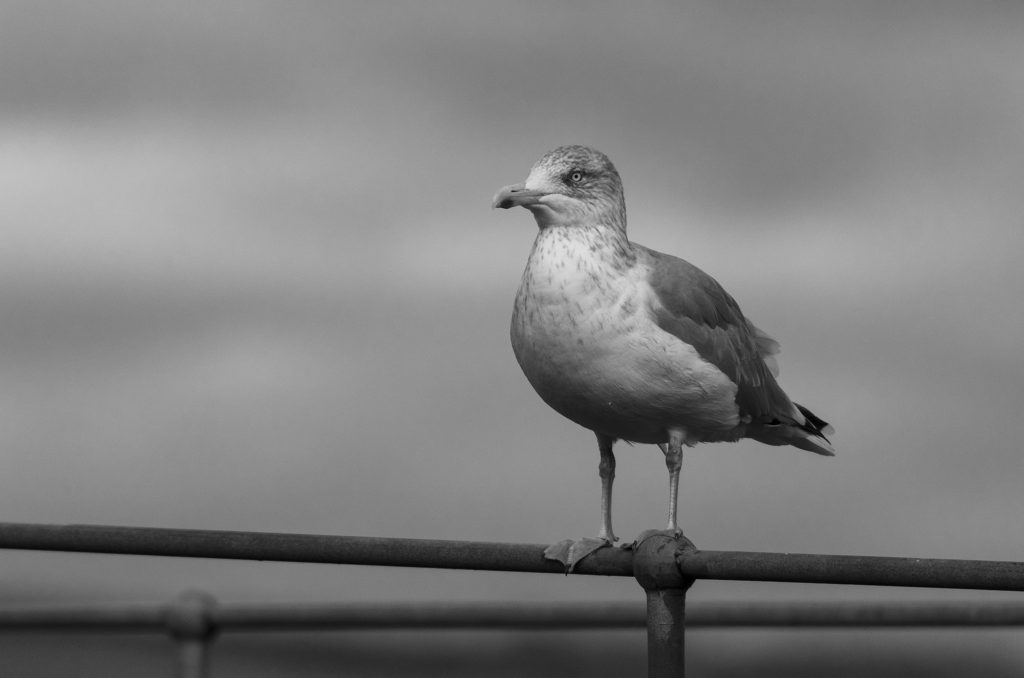I recently posted an image of a herring gull in flight on Instagram and explained why I will be doing a photography project on urban gulls, saying “I hope that, with the right information and images, I can change the minds of those people that detest these birds so they are at least able to appreciate them, if not love them like I do.”
Less than a day later, I was watching an article on BBC Breakfast highlighting the Gull’s Eye Project. A team of scientists – Dr Katherine Herborn and Dr Alex Wilson, at the University of Plymouth, and Dr Ruedi Nager at the University of Glasgow – are aiming to find out whether a response to eye contact indicates the gull’s perception of the riskiness of their environment…and they need your help! The researchers need us to download the Epicollect5 App and then record our sightings of gulls and how they respond to a 5-second stare (find out more at five.epicollect.net/project/the-gulls-eye-project). They say the birds’ responses – like staring back or flying away – might indicate their perception of risk. Having this citizen science data may help to explain population declines and, hopefully, provide information that can be used to improve the relationship between human and gull populations. So, please go and download the app now and get staring!
I have also been reading fascinating new research from the University of Bristol that shows that gulls can adapt to human timetables to minimise the time and energy they expend foraging. The researchers tracked the movements and behaviours of herring gulls and lesser black-backed gulls that nest on roofs near Bristol city centre. They found that the average number of gulls present at a school was three times higher when the children were outside eating at morning break or lunchtime and most gulls flew into a rubbish site only when new waste was being unloaded. In the park they monitored, the gulls were present in the early morning when there was a lack of people but plenty of worms and insects to eat. The scientists believe that this ability to adapt to our activities is one reason that populations of gulls have increased rapidly in cities in the last 40 years. They hope that their research will help councils to better understand gull behaviour, which should hopefully help them to manage how humans and gulls coexist. I am all for this as I am tired of these birds being demonised!
Despite appearances to the contrary, the European herring gull population is in freefall. This is due to the UK’s breeding population being in trouble, which has led to the herring gull having ‘Red listed’ conservation status for the past ten years. Although some feel that these birds are everywhere they look, this is only due to the fact that a greater proportion of these gulls have formed their nesting colonies in urban areas.

I captured the image of a herring gull above at Newark Castle Pier. This adult bird is in its non-breeding plumage, with greyish streaks on its head and neck. I decided to convert this image to black and white as the moody sky in the background seemed to complement the grey shades of the bird.

